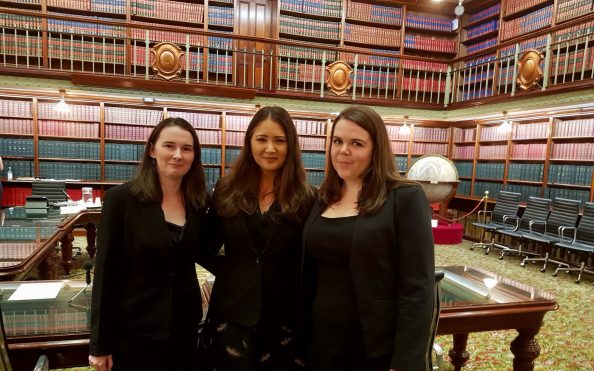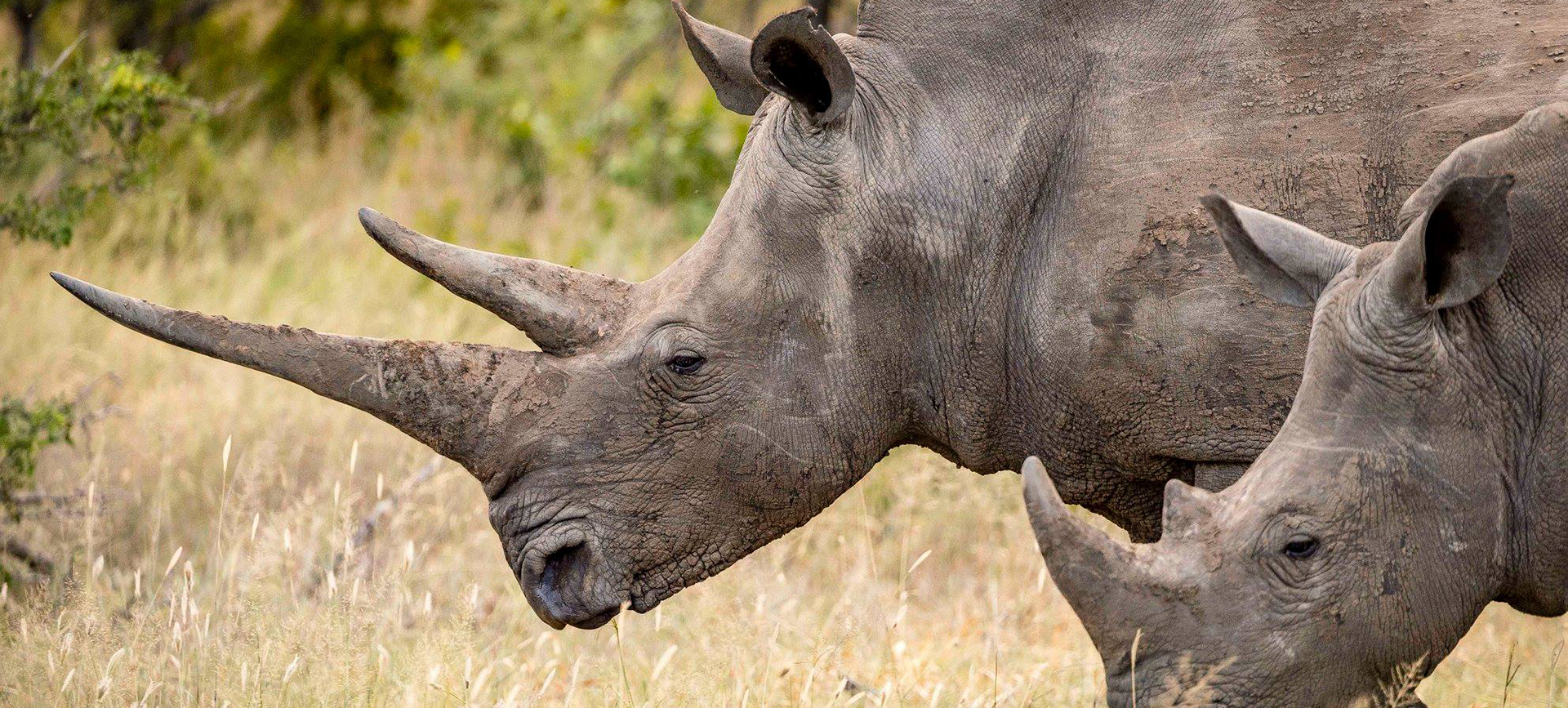With an elephant killed every 15-26 minutes and three rhinos killed everyday in South Africa alone, a parliamentary inquiry into elephant ivory and rhinoceros horn trade in Australia has never been more important.
Representatives from the Macquarie Law School’s Centre for Environmental Law (CEL) appeared before the Parliamentary Joint Committee on Law Enforcement inquiry into trade in elephant ivory and rhinoceros horn on 3 July.
Centre Associate and Deputy Director, Zara Bending and Dr Shireen Daft, were joined by current student volunteer Shannon Peters, as they gave evidence and fielded questions from the Committee during the inquiry’s Sydney hearing.
The Committee, comprised of Chair Craig Kelly MP, Deputy-Chair Senator Lisa Singh and Jason Wood MP, heard submissions from a range of interested parties, including NGOs, the Department of Environment and Energy, and auction houses.
“This inquiry provides an opportunity for evidence-based law reform on an issue that requires a multidisciplinary approach. CEL provided evidence on the existing gap in regulation within Australia and implored the committee to be mindful of the transnational organised crime and conflict dimensions of the problem in addition to environmental concerns,” says Zara.

The illegal wildlife trade is a multibillion dollar transnational crime problem, with elephant ivory and rhinoceros horn currently featuring as significant commodities traded.
“Currently, an elephant is killed every 15-26 minutes, and three rhinos are killed everyday in South Africa alone, and both estimates are conservative. At current rates, we will see these iconic species extinct within our lifetime, potentially within 20 years,” Zara explains.
“To give you a sense of numbers, Africa’s elephant populations have dropped from approximately five million a century ago to fewer than half a million today. By comparison, we only have approximately 30,000 Asian elephants left, and have fewer than 29,000 rhinos worldwide – across five species, three of which are critically endangered.”
With poaching occurring thousands of kilometres away, it is easy to assume that Australia doesn’t play much of a role in illegal wildlife trade. However, this is not the case.
“Australia does play a part in the current market. The United Nations Office for Drugs and Crime identified Australia as a country of transit and destination for ivory, for example the $80,000 worth of ivory seized in inner Sydney in 2014, and the 110kg of ivory seized in Perth in 2015 en route from Malawi to Malaysia,” explains Zara.
“Of course, seizures are only the tip of the iceberg. The real money at this stage appears to be re-exporting to markets in Asia.”
In 1976, Australia became a party to the Convention on the International Trade of Endangered Species of Wild Fauna and Flora (CITES), under which we saw the international trade in elephant ivory banned in 1989 and the international rhinoceros horn trade prohibited since 1977.
Australia gave effect to CITES provisions under our Commonwealth Environment Protection and Biodiversity Conservation Act, however this only regulates international trade, and this relies on a system of permits, which as the inquiry has heard, is by no means fool-proof.
“However, the crux of this inquiry is that there are no laws, zero, that currently regulate the trade of ivory and horn within Australia. So, domestic trade can occur without the requirement of certificates or provenance documentation within or between states and territories,” says Zara.
“So, the problem here is that once an item finds its way into Australia, through legal import under CITES or by being smuggled in, it enters the legal market and can be traded. This is a prime example of a legal market acting as conduit for illicit trade and it offers organised crime the perfect conditions of high profits and low risks.”
In addition to looking at whether our current regulation in this area is sufficient, the Committee also saw submissions on a variety of related questions including the practices of auction houses, authenticity of documentation, whether Australia Border Force and other agencies have adequate training to spot illegal items and dodgy documentation.
“It’s pulled out a wealth of information. For example, with typical methods of smuggling we see that personal baggage is favoured for both commodities along with the relative ease of sending via mail as officials prioritise drug searches,” explains Zara.
“Witnesses also submitted that pre-export modification is making items harder to identify, including staining ivory to make it look older so it could visually pass as a pre-CITES antique.”
The inquiry completed its final public hearings in Canberra last week, with its findings to be released later this year.
For more information on the illegal ivory and rhino horn trade in Australia, take a look at a recent article Zara penned for The Lighthouse.
Zara is also author of the recent lead article in the May issue of Environment and History:
Zara J Bending, ‘Improving Conservation Outcomes: Understanding Scientific, Historical and Cultural Dimensions of the Illicit Trade in Rhinoceros Horn’ (2018) 24(2) Environment and History 149-186.


 Back to homepage
Back to homepage
I am writing a book that includes a chapter on biomimicry, and I would like to use your image of the rhinoceros for my book. How do I obtain your permission?